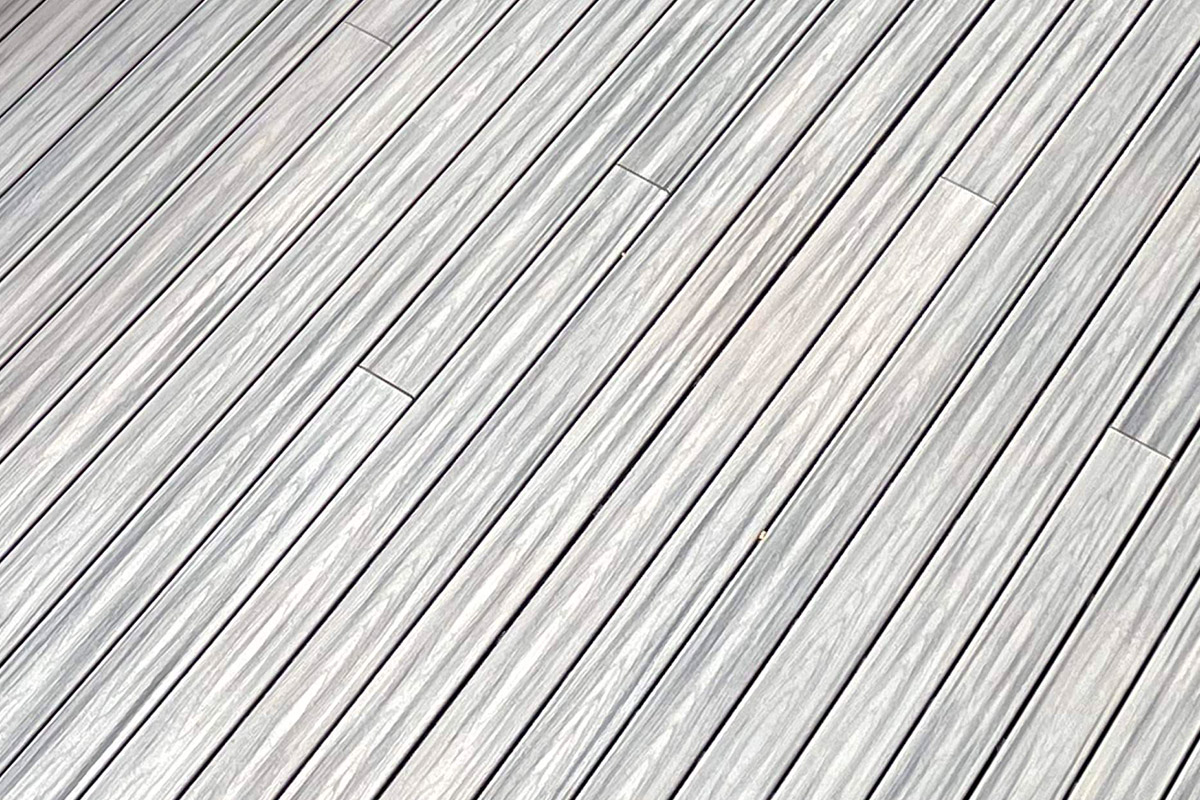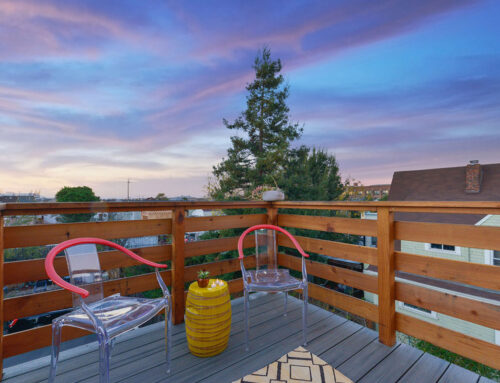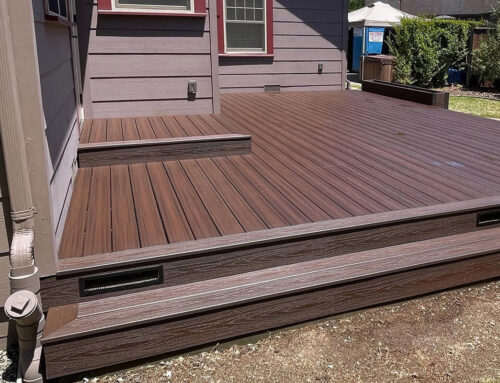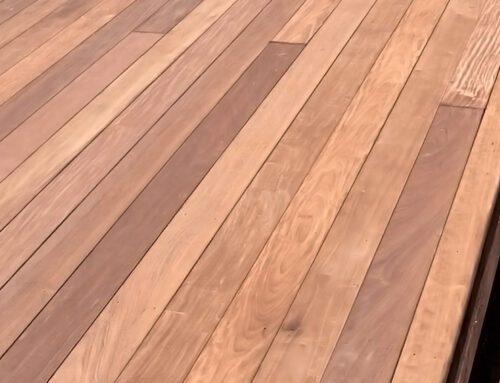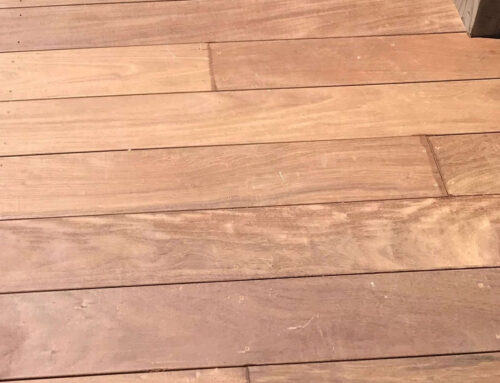Should the wood or composite boards of your deck have small gaps between them? Yes, decking should have gaps. These gaps are essential to the quality of the deck, but for safety reasons, they also can’t be too large. There is also one circumstance where your deck shouldn’t have gaps right away. Learn about the proper spacing of deck boards below.
Why Should Decking Have Gaps?
The small gaps between decking boards are meant to allow for water to drain off the deck quickly. They also allow each board to expand with moist conditions in the summer and shrink with drier conditions in the winter. These gaps may also allow green wood to dry and make it a little easier for you to clean the deck, as small debris can just fall down between the boards.
What Should the Gap Be?
The exact gap that you should leave between the boards of a deck depends on the material. For wood, a minimum 1/8th inch gap should be left between each board. However, larger gaps may be necessary depending on the species of wood.
The only exception to this rule is when you’ve installed a deck with green wood or wood that has not properly dried out yet. Then, you can install the boards right next to each other. As they dry, they shrink and create the necessary gap. Depending on the wood, a very slight gap may still be ideal to aid with the drying process.
What about composite wood? In general, composite wood shrinks and expands less than real wood. While you may see composite wood installed with the same 1/8th inch gap, many can actually handle 1/16th inch gaps. The manufacturer of the material should indicate how much the material is expected to expand and shrink, and you should base your gap based on that.
It is best to minimize the gap between boards where possible because this makes the surface of the deck easier to walk on and makes it look better too.
What Happens If There is No Gap?
So, you or your deck builder made a mistake and didn’t leave any gaps in between the planks on your deck. How big of a deal is it? Unfortunately, you can expect quite a few problems from this issue, including:
- Poor draining: Instead of draining between boards, the water will only drain off the sides of the deck. This will take much longer, and the sitting water will damage the wood or composite. This may also create soil issues around the deck.
- Surface abrasion: After the sitting water harms the deck’s seal or soaks into wood that isn’t sealed, it will cause other water damage to the deck faster.
- Wood warping: When the wood expands, it will have nowhere to go. This will cause warped wood and can break the deck.
Simply resealing the deck and repairing any warped wood will not truly fix the issue in this case. Unfortunately, if your deck lacks gaps, the entire thing needs to be properly spaced out. A reputable and experienced deck builder can help you correct this issue and any other potential issues with your deck.


